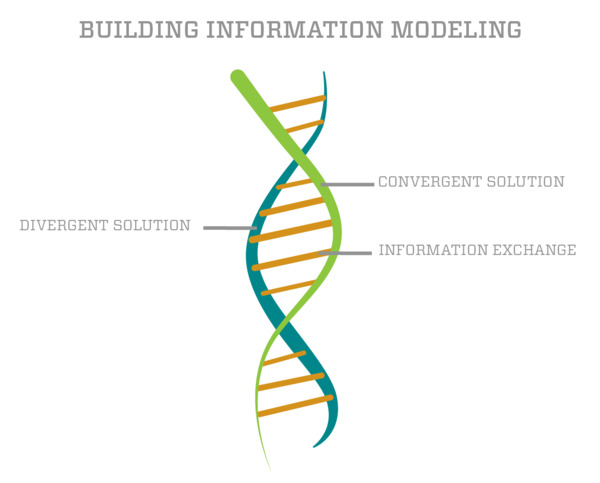We have all worked on AECO projects and portfolios that have experienced one or more of the following situations:

- Incomplete requirements
- Contradictory requirements
- Changing requirements
If we are honest about the nature of facilities lifecycle development and management, we can easily conclude that these types of requirement shortfalls are inevitable. This reveals an issue of scope creep that resists resolution because good faith efforts to solve one aspect of the initial problem tend to reveal new, related problems that need to be solved. Over the past decade it has become the norm that as soon as we get better at handling one design discipline, a new design discipline is introduced that adds an increased level of complexity.
BIM, as an agent of continuous improvement, offers both convergent and divergent solutions to address AECO project and portfolio complexity. BIM has shown real promise in aiding us to better handle most design disciplines we encounter. BIM introduces the ability to handle more design disciplines simultaneously. Considering these two equally however, the overall net result is that AECO projects and portfolios are evolving into complex, expanding and never-ending endeavors.
The nature of complex systems is that changes to one variable most often affect other variables. Once we recognize that implementing BIM can and should be considered from this perspective, we can quickly realize several actionable, productive approaches that take into consideration how all stakeholders can benefit from BIM.
We should not assume that introducing BIM will make our projects or portfolio more efficient or effective immediately.

BIM implementation can appear chaotic in its implementation
Many BIM solutions that were used productively by Team A on Project A for Building A may not be as productive for Team B on Project B for Building B. This is partly because there is a real and present consequence to defining initial conditions. If we start with only a limited amount of information about a system, as is unfortunately often the case when applying BIM in practice to either a project or a portfolio, then beyond a certain point in space and time this system will no longer be predictable. While an absolute understanding of the present can determine the near future, an estimated understanding of the present usually predicts the distant future very poorly. There are many unknown dynamics involved with implementing BIM.
Don’t assume your project experience using BIM will inform eventual portfolio needs.
BIM implementation has stigmergic behavior
Many independently-developed, overlapping open BIM standards and methods have developed over the past decade that collectively contribute to an overall greater good. With surprisingly little global planning, extremely simple control, almost no direct communication, and often a complete lack of awareness between the contributing agents, an evolving, seemingly-intelligent collaboration toward consensus of describing complex BIM concepts is slowly being produced across the AECO industry. There is plenty left to discover in best practices in implementing BIM.
Don’t assume existing BIM standards will inform all your project needs.
BIM implementation is a necessary evil
Most teams that have embraced BIM have seen the number of construction documents in a project set go up over time not down. This may not be desirable, but it is not a bad thing either. Our ability to initially make drawing sheets is now faster, with greater accuracy, and we can make changes further into the timeline. The reality is that our information exchanges evolve slower than our means to create them.
Don’t assume BIM will reduce deliverables.

